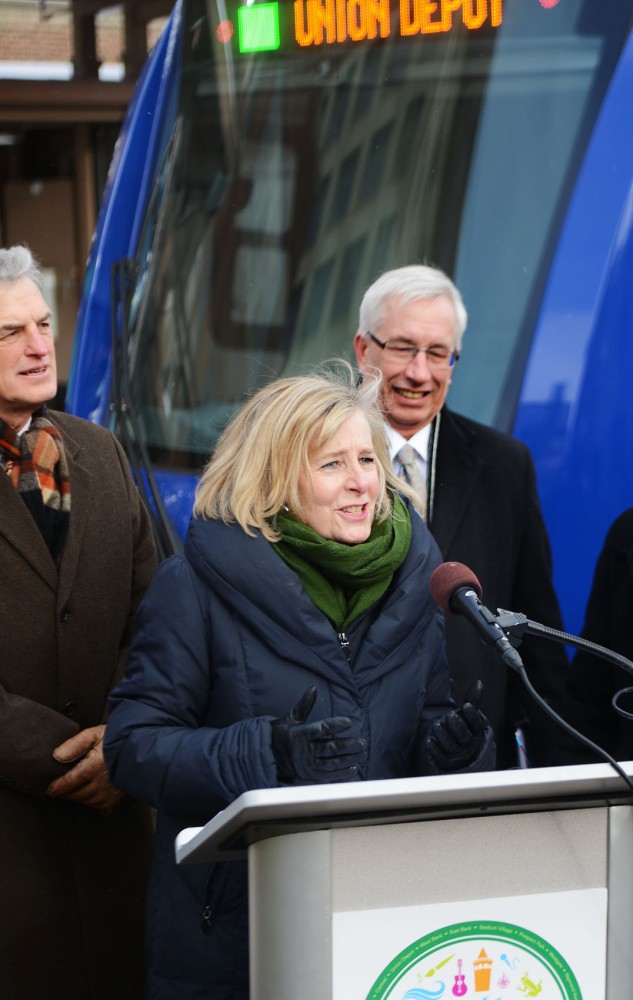The light rail Green Line will start service June 14, cutting through the center of the University of Minnesota’s campus, the Metropolitan Council announced Wednesday.
The 11-mile transit line, formerly known as the Central Corridor line, will connect Minneapolis and St. Paul along University Avenue, serving as an alternate transportation option for the University community.
Hennepin County Commissioner Peter McLaughlin described the Green Line as a “terrific resource for students and the University and the faculty” after a press conference Wednesday.
With stations on West Bank, East Bank, Stadium Village and Prospect Park, some students are excited about the greater accessibility.
“It goes through the heart of campus and can get you anywhere in the Twin Cities,” said Family Social Science freshman Ana Lozano.
Construction on the line began in 2010 and was mostly finished last year. Metropolitan Council chair Susan Haigh said this year will be focused on testing, training and safety. The project is also ahead of schedule and on budget, said Haigh.

Project communications manager Laura Baenen said last week Metro Transit was still waiting for 20 of the 59 light-rail vehicles to finish
production in Sacramento, Calif. Operators also still need to be trained, she said.
Metro Transit is also coordinating bus route changes with the light rail opening.
Spokesman John Siqveland said last week the 16 bus route will run less frequently and the 50 bus route will be eliminated. Both routes have substantial overlap with the Green Line.
These changes will let Metro Transit reinvest into other routes, Siqveland said, so they can run longer and more often.
While the University already offers free rides through several campus shuttle routes, Metro Transit is still a popular option for students.
Lozano said she used Metro Transit “all the time” last semester because of a service learning component to one of her classes, and said she plans on using the new rail.
Finance freshman Sarah Downey said she uses Metro Transit to Target, Cub Foods and the Mall of America.
While both students plan on utilizing the Green Line, they also expressed concern about traffic safety along the line with pedestrians, cyclists, buses, and the light rail all sharing the road.
Metro Transit encourages pedestrians to avoid distractions like cellphones and has developed plans and resources to address the safety concerns.
“If we are all just a little bit aware, it will be okay,” Downey said. “I don’t foresee any big calamities.”
The Green Line also offers a new option for commuter students.
But Gender, Women and Sexuality Studies senior Ashley Zuest, who will take her final classes this summer, said she likely won’t use the light rail because she carpools to campus.
Post-Secondary Enrollment Options student Taylor Allgood uses the 16 bus route as part of her commute and said she would likely switch to the Green Line when it opens.
“It’s a reliable, economical way to get to school,” McLaughlin said.









